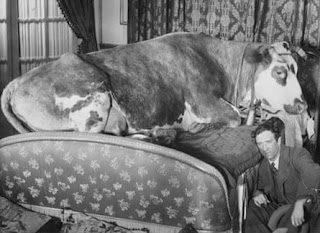A Commentary on a Passage from Roland Barthes' The Pleasure of the Text (1973)
"Text of pleasure: the text that contents, fills, grants euphoria; the text that comes from culture and does not break with it, is linked to a comfortable practice of reading. Text of bliss: the text that imposes a state of loss, the text that discomforts (perhaps to the point of a certain boredom), unsettles the reader's historical, cultural, psychological assumptions, the consistency of his tastes, values, memories, brings to a crisis his relation with language" (Barthes, 1973, p. 110).
Barthes' theoretical analysis of how one (a reader) derives pleasure from a text, whether it be out of some erotic perversion or narrative satisfaction, elucidates how the reader understands their own cultural composition. In this passage, Barthes discusses texts of pleasure and texts of bliss. Regarding texts of pleasure, Barthes unpacks the notion that text can grant a sense of euphoria to the reader that is derived from the culture it is a part of and adheres to its values. It appears that with this idea brought forth from Barthes, he is alluding to a deeper notion that suggests that texts of pleasure do not challenge a reader and their potentially fragile (world) perspective. In other words, these works excite a reader's imagination or psyche by playing on or catering to what is socially accepted, e.g. the norms, (collective) ideals, laws, etc., then present that information in a way that almost seduces the reader's attention, which can be done through a sexual or erotic manner. Barthes' discussion of a text of bliss is essentially described as the opposite of a text of pleasure. Here, he examines how these works provoke the reader's imagination using an approach that is meant to challenge and unsettle them, which may invoke a sense of boredom. In other words, Barthes is attempting to convey the notion that these texts take the reader's set of pre-existing assumptions or beliefs, and flips it around on them in order to, in essence, shock them into making an epiphany or rethinking their own socio-cultural norms, which they are most likely accustomed to in their daily lives.
The closest connection I can make to Barthes' theory comes from a piece of surrealist cinema, titled L'Age d'Or, which was directed by Luis Buñuel in 1930. What's interesting with this film is the overtly sexual manner of the characters presented and how it embodies Barthes' notion of a text of bliss, to a certain degree. While yes, the film is a satirical comedy that reflects Buñuel's trials and tribulations with Franco Spain's harsh censorship, it does indeed echo what Barthes discusses in regards to pushing the boundary and causing audiences to think more critically of their own (bourgeois) society. The work is brilliantly crafted to unsettle viewers with the erotic dream-like scenarios the main couple finds themselves in and simultaneously call out the bourgeoisie's flawed ideologies through various juxtapositions of images. Since the content was so flagrant at the time of the film's conception and release, it was eventually banned by the Paris police and suffered from many ordeals pertaining to said censorship. The reason audiences might have perceived this work as boring is because it featured heavily charged cultural criticism in its underlying fabric. Therefore, it is without a doubt that the correlation between Barthes and Buñuel's works is quite clear, especially since Barthes' theories can be applied to the cinematic world as well.


No comments:
Post a Comment